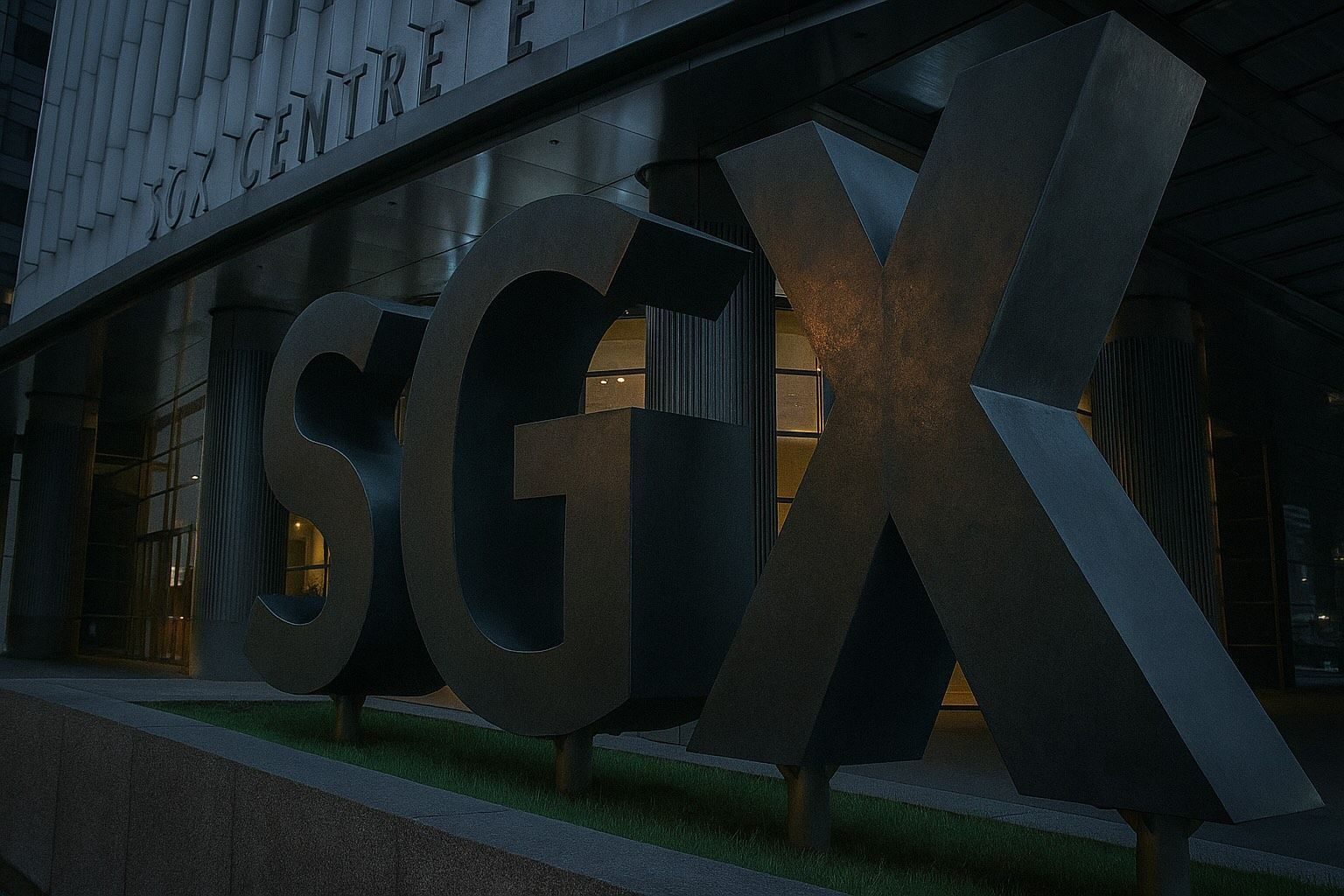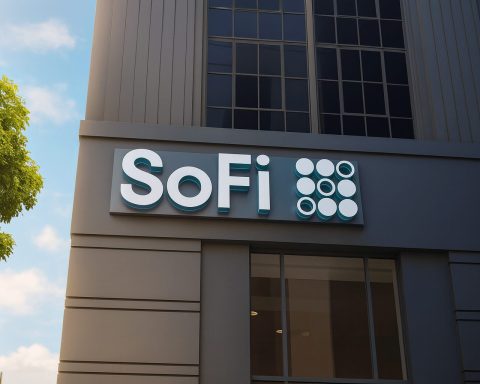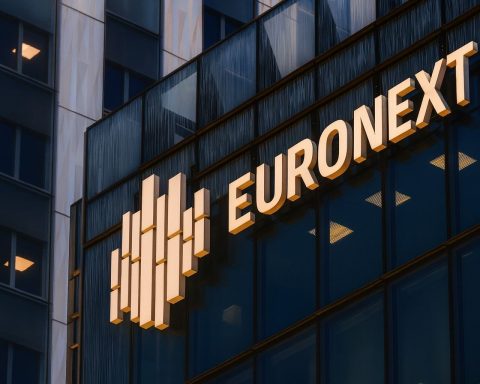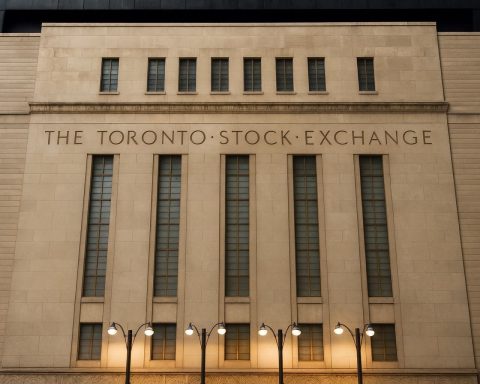Singapore’s stock market started the final week of November on a firmer footing, with investors balancing upbeat policy and growth signals against a sharp jump in inflation.
The benchmark Straits Times Index (STI) rose 0.6% (27.49 points) to close at 4,496.63 on Monday, 24 November 2025, even as broader Asia posted a mixed performance. Market breadth was positive, with 336 gainers versus 238 losers, on about 2.1 billion shares traded worth roughly S$3.2 billion. [1]
The iEdge Singapore Next 50 Index, which tracks large-cap names outside the STI, slipped 1.2% to 1,438.67, showing that the day’s strength was concentrated in blue chips rather than the wider market. [2]
Market Snapshot: STI Rises as Global Risk Sentiment Improves
Monday’s session came after a choppy week for global equities, driven by questions over stretched artificial‑intelligence valuations and uncertainty around the pace of US rate cuts.
Global stocks opened the week on a positive note, with investors increasingly pricing in the chance of a Federal Reserve rate cut in December, helping risk appetite across major markets. [3]
In Asia:
- Hong Kong’s Hang Seng Index gained about 2%,
- Malaysia’s KLCI added roughly 0.1%,
- While Japan’s Nikkei 225 and South Korea’s Kospi slipped, reflecting lingering caution in North Asia. [4]
Against that backdrop, Singapore’s STI outperformed many regional peers, underpinned by renewed confidence in the domestic policy outlook and structural reforms to the local bourse.
Macro Backdrop: Stronger Growth but Inflation Reappears
Two key macro themes framed trading in Singapore on 24 November: upgraded growth forecasts and a surprise jump in inflation.
Growth: 2025 GDP Forecast Raised to “Around 4%”
Just days before Monday’s session, Singapore’s Ministry of Trade and Industry (MTI) upgraded its 2025 GDP growth forecast to “around 4%”, from the earlier 1.5%–2.5% range. [5]
The revision followed a much stronger‑than‑expected 4.2% year‑on‑year expansion in the third quarter of 2025, beating both advance estimates and economist forecasts. Growth was driven by manufacturing, wholesale trade and finance, with a notable boost from global demand for AI‑related electronics and servers. [6]
For equity investors, the shift from a cautious to a clearly above‑trend growth outlook helps justify the STI’s powerful rally this year and supports earnings resilience among cyclical sectors such as banks, industrials and export‑oriented tech.
Inflation: Core CPI Jumps to 1.2%, Highest in 2025
On Monday itself, official data showed that core inflation jumped to 1.2% year‑on‑year in October, up sharply from 0.4% in September – the highest reading so far in 2025. Overall CPI‑All Items inflation also rose to 1.2% from 0.7%, largely driven by higher private transport costs. [7]
The rise in core prices was broad‑based, reflecting:
- Faster increases in health insurance and healthcare costs,
- Higher food and retail prices,
- A smaller decline in electricity and gas tariffs. [8]
Economists noted that this suggests inflation has likely “bottomed”, and that the Monetary Authority of Singapore (MAS) is likely to hold policy steady at its next review, rather than accelerate any easing. [9]
For the stock market, this mix of stronger growth but gently re‑accelerating inflation keeps the focus on rate‑sensitive sectors like REITs and high‑dividend stocks, but the modest absolute level of inflation (still below 2%) has not yet triggered fears of aggressive tightening.
SGX–MAS Reforms: Structural Tailwind for Singapore Equities
A major driver of sentiment on the Singapore bourse in recent sessions has been a suite of equity‑market reformsunveiled by MAS and the Singapore Exchange (SGX) on 19 November, which continued to reverberate through Monday’s trade.
According to Market Insights commentary, the market has reacted positively to these measures, which aim to boost liquidity, attract new listings and improve investor engagement. [10]
Key initiatives include:
- A proposed dual‑listing bridge between SGX and Nasdaq, allowing qualifying companies (market cap ≥ S$2 billion) to use a single set of prospectus documents to list concurrently in Singapore and the US, potentially expanding their capital and investor base across both regions. [11]
- Allocation of S$2.85 billion to a second batch of six asset managers under the S$5 billion Equity Market Development Programme, channelling long‑term institutional capital into Singapore‑listed stocks. [12]
- A “value unlock” programme with S$30 million in grants to help listed companies strengthen corporate strategy, capital optimisation and investor relations – especially relevant for under‑researched small and mid‑caps. [13]
- A reduction in board lot size from 100 to 10 units for stocks priced above S$10, lowering the minimum capital needed for retail investors to access large‑cap blue chips. [14]
These reforms come after a challenging period for IPO activity and trading volumes. The STI has nonetheless climbed from around 3,739 in November 2024 to above 4,500 in late 2025, while a Deloitte report highlighted that Singapore has posted its strongest IPO performance since 2019, with nine deals raising about US$1.6 billion in the first 10½ months of the year. [15]
Recent and upcoming listings such as Yangzijiang Maritime (a spin‑off of Yangzijiang Financial) and UltraGreen.ai, a medical imaging and AI‑driven surgical technology firm targeting about US$400 million in its SGX IPO, underscore the reviving pipeline of growth companies tapping the local market. [16]
Crypto Futures Launch: SGX Steps Deeper into Digital Assets
In a further sign of Singapore’s ambition to position itself as a regional hub bridging traditional finance and digital assets, SGX’s derivatives arm is rolling out bitcoin and ether perpetual futures trading from 24 November 2025.
The contracts, available to accredited and institutional investors, allow round‑the‑clock leveraged exposure to bitcoin and ether without an expiry date, offering a regulated alternative to offshore crypto derivatives platforms. [17]
The launch:
- Aligns with MAS’ cautious but pragmatic approach to crypto – encouraging institutional, on‑exchange activity while discouraging retail speculation.
- Potentially draws Asian crypto flows into SGX, deepening its derivatives franchise and diversifying beyond traditional FX, equity and commodity contracts. [18]
While Monday’s session in equities did not show an obvious “crypto effect”, the move adds another structural growth lever for the exchange and is likely to be closely watched by investors in SGX’s own shares, which slipped 1.1% to S$16.54 on the day, making it the worst performer in the STI despite the broader index gain. [19]
Top Movers: Jardine Matheson Soars, SGX and DBS Lag
Within the STI, stock‑specific moves were pronounced on 24 November:
- Jardine Matheson Holdings surged 8.7% to US$67.56, topping the index’s gainers and contributing meaningfully to the STI’s advance. The conglomerate recently reiterated that its third‑quarter performance was in line with expectations and signalled continued balance‑sheet deleveraging. [20]
- Singapore Exchange (SGX) fell 1.1% to S$16.54, a notable laggard in spite of the positive news flow around regulatory reforms and its expanding product suite. [21]
- Among the three local banks, which together form the backbone of the STI:
- OCBC edged up 0.1% to S$18.08,
- UOB added 0.1% to S$33.89,
- DBS slipped 0.5% to S$53.38, suggesting selective profit‑taking after a strong year‑to‑date run. [22]
The divergence between Jardine Matheson’s sharp rally and the more muted showing in banks and SGX reflects stock‑specific catalysts and rotational trades rather than a broad risk‑on or risk‑off stance.
Institutional Flows: Tourism, Real Estate and Buybacks in Focus
Fresh data on institutional and insider activity, covering the five sessions from 14–20 November, continued to inform market sentiment headed into Monday’s trade.
An SGX‑sponsored “SG Market Updates” column noted that institutions were net sellers of Singapore equities to the tune of about S$131 million over that period, partially reversing a large net inflow the week before. [23]
Key takeaways:
- The biggest net institutional outflows were seen in heavyweight names including DBS, CapitaLand Investment, Yangzijiang Shipbuilding, Singapore Airlines, Jardine Matheson, Frasers Centrepoint Trust, Sembcorp Industries, Keppel DC REIT, Seatrium and SGX. [24]
- Conversely, Keppel, OCBC, Hongkong Land, ST Engineering, Wilmar, Yangzijiang Maritime, UOB, Singtel, Lendlease Global Commercial REIT and CSE Global led net institutional inflows. [25]
- Share buybacks remained active, with 17 primary‑listed companies repurchasing roughly S$58.2 million of their own stock over the same period. UOB stood out, buying back nearly 1 million shares at an average S$34.01. [26]
These flows indicate that investors are rotating between banks, developers, REITs and beneficiaries of tourism and travel, rather than pulling out of the market wholesale. For Monday’s session, the modest rise in the STI alongside ongoing institutional churn suggests selective positioning rather than broad capitulation or euphoria.
REITs: Office Names Supported by Better Vacancies and Rents
Beyond the index, Singapore REITs (S‑REITs) – especially those with office exposure – remain a key area of interest as investors search for yield in a low‑inflation, slow‑normalisation environment.
A “REIT Watch” column released on 24 November highlighted that vacancy rates in the Singapore office market have eased slightly, with the Urban Redevelopment Authority reporting a move from 11.4% in Q2 to 11.2% in Q3, while Grade A office rents rose around 2.1% year‑on‑year. [27]
Major office‑focused S‑REITs like CapitaLand Integrated Commercial Trust (CICT), Mapletree Pan Asia Commercial Trust (MPACT), Keppel REIT, Suntec REIT and OUE REIT reported:
- High portfolio occupancies, often in the mid‑90s to high‑90s percent range,
- Positive rental reversions, in some cases in the high single to low double digits,
- Continued portfolio optimisation and selective divestments to recycle capital. [28]
For equity investors, this backdrop—combined with still‑benign domestic interest rates—is supportive for income‑oriented positioning in office REITs, even if short‑term price moves continue to track global rate expectations.
Corporate Spotlight: Sembcorp’s India IPO and Standard Chartered’s Legal Risk
Two major Reuters stories on Monday added colour to how Singapore‑linked companies are navigating growth and legal risks.
Sembcorp Plans India Renewables IPO
Singapore‑based Sembcorp Industries, an STI component, is planning an IPO of its Indian renewables subsidiary, Sembcorp Green Infra, in Mumbai, according to people familiar with the deal. [29]
Key points from the report:
- The IPO could launch within the next 8–9 months, marking a renewed attempt after a previous listing plan was withdrawn in 2019.
- Sembcorp Green Infra focuses on wind, solar and energy storage, and competes with major Indian players such as Adani Green Energy.
- Citi, HSBC and Axis Capital have reportedly been appointed as advisers, though the final offering size is still under discussion. [30]
For Singapore investors, the deal could crystallise value in Sembcorp’s fast‑growing Indian renewables platform and sharpen the market’s focus on the group’s energy transition strategy.
Standard Chartered Faces US$2.7 Billion 1MDB Suit in Singapore
Separately, the Singapore High Court has allowed a US$2.7 billion lawsuit to proceed against Standard Chartered Bank over its alleged role in the 1MDB fraud, with the bank planning to appeal. [31]
Liquidators of 1MDB claim that Standard Chartered facilitated more than 100 intrabank transfers between 2009 and 2013, allegedly helping to move misappropriated funds. The case is part of a broader global effort to recover billions linked to the scandal. [32]
While Standard Chartered is not listed on SGX, the case:
- Underscores ongoing compliance and reputational risks for global banks active in the region,
- Reinforces the importance of Singapore’s regulatory framework and enforcement track record, themes that matter for the broader financial sector listed on the STI.
How Today Fits into the STI’s 2025 Story
Taken together, Monday’s trading session highlighted several overlapping narratives for the Singapore market:
- Structural optimism:
- Upgraded GDP forecasts, a robust AI‑driven export cycle, and ambitious SGX–MAS reforms have pushed the STI to historic highs above 4,500 in 2025 and revived the IPO market. [33]
- Macro cross‑currents:
- Inflation has likely bottomed and is moving gently higher, but remains contained, giving MAS room to stay patient rather than slam the brakes on growth. [34]
- Portfolio rotation, not exodus:
- Institutional flows show net selling in some heavyweight financial and industrial names, balanced by accumulation in other blue chips, select REITs and mid‑cap plays linked to tourism and property. [35]
- Innovation in capital markets:
- From the Nasdaq dual‑listing bridge to bitcoin and ether perpetual futures, SGX is experimenting with new ways to attract issuers, deepen liquidity and integrate digital assets into the mainstream. [36]
For now, the 0.6% rise in the STI on 24 November 2025 looks less like a speculative spike and more like a market adjusting to a new equilibrium: one where Singapore’s growth prospects are brighter, its capital markets more ambitious, and its inflation backdrop a touch less sleepy—but still far from alarming.
References
1. www.businesstimes.com.sg, 2. www.businesstimes.com.sg, 3. www.reuters.com, 4. www.businesstimes.com.sg, 5. www.channelnewsasia.com, 6. www.channelnewsasia.com, 7. www.channelnewsasia.com, 8. www.channelnewsasia.com, 9. www.channelnewsasia.com, 10. www.straitstimes.com, 11. www.channelnewsasia.com, 12. www.straitstimes.com, 13. www.straitstimes.com, 14. www.straitstimes.com, 15. www.straitstimes.com, 16. www.straitstimes.com, 17. www.channelnewsasia.com, 18. www.channelnewsasia.com, 19. www.businesstimes.com.sg, 20. www.businesstimes.com.sg, 21. www.businesstimes.com.sg, 22. www.businesstimes.com.sg, 23. klse1.i3investor.com, 24. klse1.i3investor.com, 25. klse1.i3investor.com, 26. klse1.i3investor.com, 27. klse1.i3investor.com, 28. klse1.i3investor.com, 29. www.reuters.com, 30. www.reuters.com, 31. www.reuters.com, 32. www.reuters.com, 33. www.straitstimes.com, 34. www.channelnewsasia.com, 35. klse1.i3investor.com, 36. www.channelnewsasia.com










